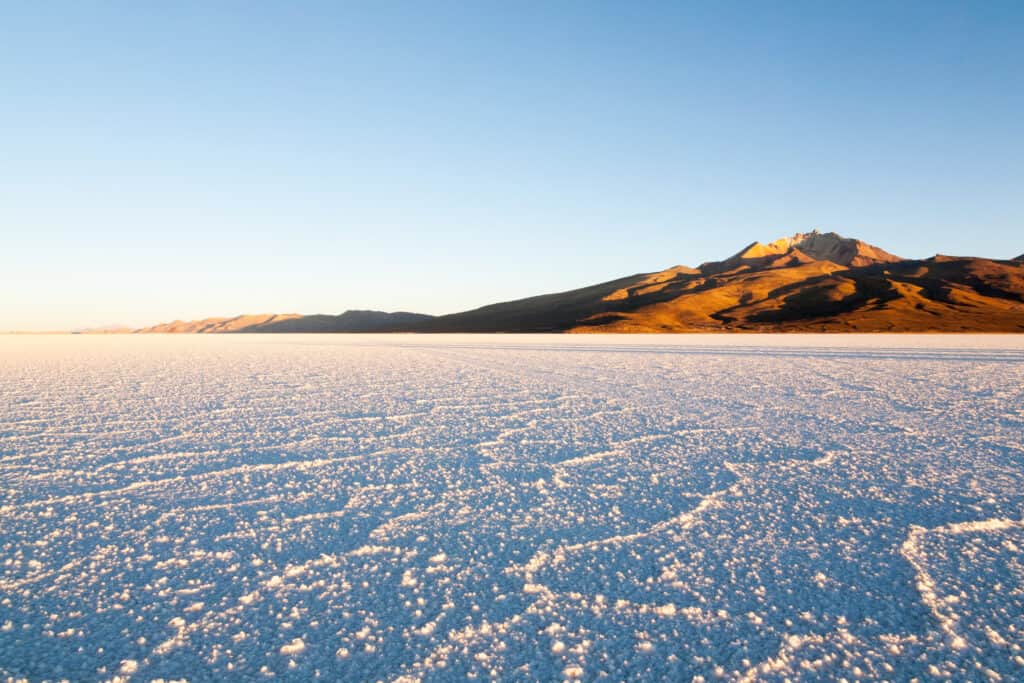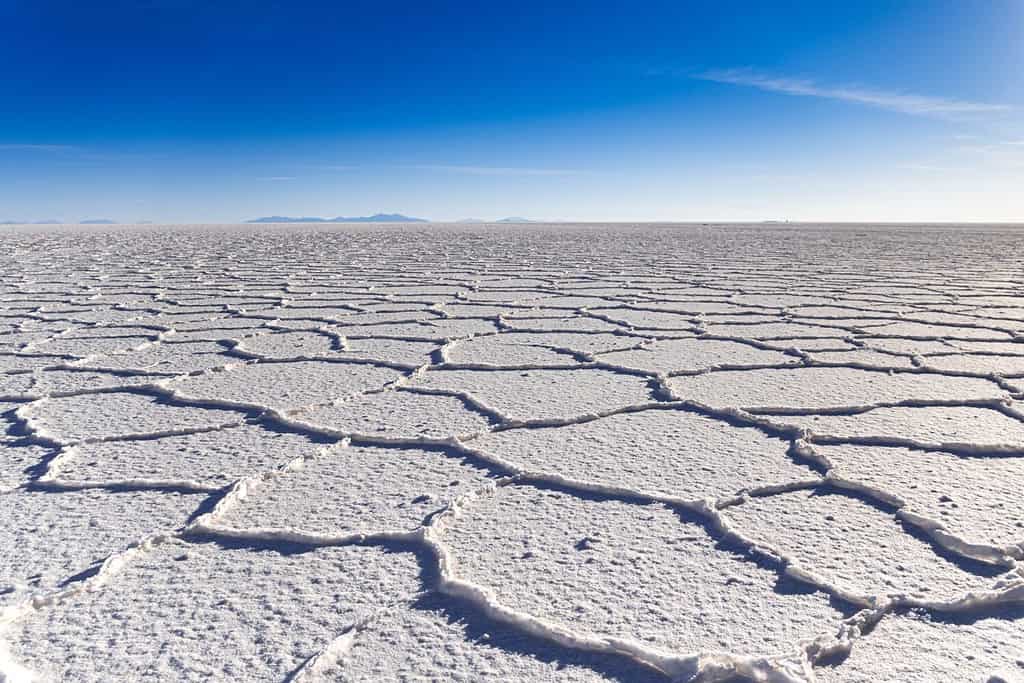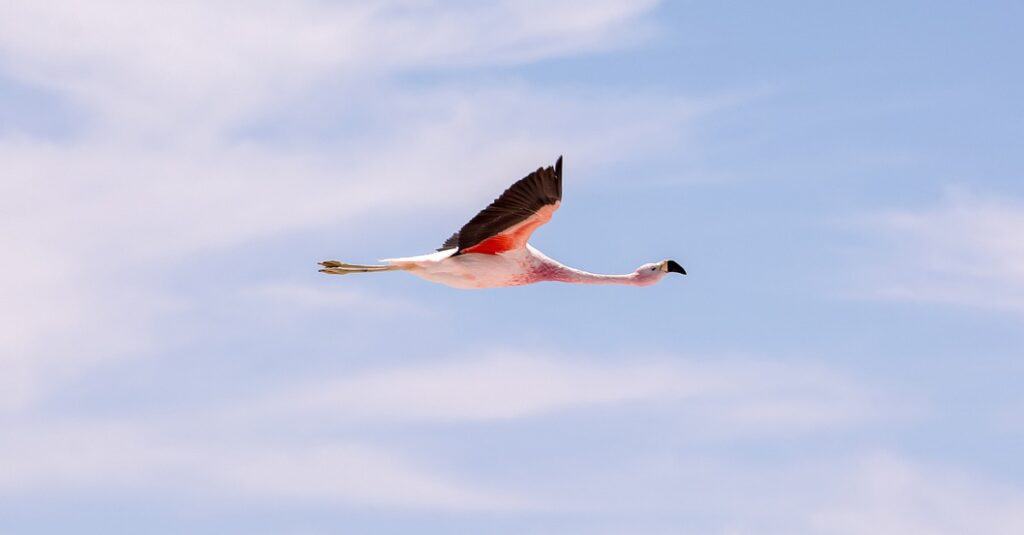You might not think of “flatlands” as beautiful, especially after witnessing some of the most incredible mountains in the world, but the flattest place on earth is, indeed, stunningly beautiful. Technically, one place is flatter than this gorgeous spot in South America, but there’s a reason it’s not on destination lists.
Let’s look and see what qualifies as the flattest place on Earth and what you can do to enjoy the stunning site.
What is the Flattest Place on Earth?

The abyssal plains, deep beneath the ocean, the technical flattest place on earth. No one can reach these depths, though, as the land lies deep beneath the ocean.
©zombiu26/Shutterstock.com
Technically, the flattest place on Earth is the Abyssal Plains under the ocean. These vast expanses of flat, featureless terrain rest at the deepest depths of the oceans and cover about 40-percent of the floor. These plains rest at 13,000 to 20,000 feet beneath the surface of the ocean. The flatness is uniform, created by the accumulation of sediments overlying basaltic rocks of the oceanic crust.
What is the Flattest Place on Earth Above Water?

Salar de Uyuni, Bolivia, is the largest salt flat in the world. It’s also the flattest place on the Earth above the ocean’s floor!
©iStock.com/elleon
But for exploring purposes by normal humans without high-tech equipment, head to Bolivia for the flattest place on Earth above the sea. According to the experts, the Salar de Uyuni is the flattest place on Earth. The spot is also the largest salt flat in the world, approximately measuring at the size of Jamaica.
Salt in Salar de Uyuni lays from 9.8 to nearly 33 feet deep across the flats, meaning nearly 10 billion tons of salt rest within this region of Bolivia alone. The hotels in the region are actually built on the salt itself, since it lies so deep and thick, stable enough to support full buildings.
Beneath the salt, though, the minerals once mined in the region includes lithium, the mineral used in laptop and phone batteries. This is the largest known lithium reserve in the world.
Salar de Uyuni has also drawn movie makers to the spot, adding more economic boosts to the region. You may recognize scenes filmed here from Star Wars: the Last Jedi, The Fall, The Unseen, or Salt and Fire.
Where is the Flattest Place on Earth Located?

The salt layers of Salar de Uyuni may be as deep as 33 feet in some locations.
©Marco A. Huanca/Shutterstock.com
Part of the Altiplano, or Andean Plateau, Salar de Uyuni rests in Bolivia, in South America. The high plateau was formed during uplift of the Andes mountains, with fresh water and saltwater lakes appearing along with the salt flats. No drainage outlets naturally exist in the area.
What is the Economic Impact from Salar de Uyuni?
The region has become known as the Lithium Triangle, thanks to the valuable deposits of the important mineral beneath the flats. The flats also contain large amounts of sodium, magnesium, and potassium, all in chloride forms, along with borax.
The salt flats once had significant mining going on, but the mining industry departed some time ago. Companies around the world have requested mining continue, but the government has decided not to allow exploitation by these foreign corporations and, instead, has sought to reach an annual production of 35,000 tons by 2023 in joint ventures with ACI Systems Alemania GmbH.
It has been estimated that Salar de Uyuni contains some 9.8 billion long tons and 11 billion short tons of salt, with less then 25,000 tons extracted each year. The mining going on here belongs to Colchani’s cooperative.
Otherwise, the main industry of the area is tourism, along with the salt flats serving as a transport route across the Bolivian Altiplano whenever the flats aren’t covered with seasonal water.
Where Did the Flattest Place on Earth Get Its Name?
Bolivia is home to many languages, so the name of Salar de Uyuni reflects a few different people groups. Salar comes from Spanish, meaning salt flat. Obvious! But Uyuni comes from the Aymara language, meaning enclosure (pen). Basically, the name translates to the salt flat of enclosures or with enclosures. The enclosures or pens refer, likely, to the “islands” found within Salar de Uyuni. Others theorize the name comes from the town named for keeping animals.
The Legend Behind Salar de Uyuni

Tunupa Mountain along the Salar de Uynui salt flats makes for one of the most dramatic backdrops for a strange and eerily beautiful place of legend. The flattest place on Earth calls for giant tales!
©marzia franceschini/Shutterstock.com
Among the Aymara peoples, a legend of Salar de Uyuni exists. In ancient times, the mountains Tunupa, Kusky, and Kusina, surrounding the salt flats, were supposedly giant people. Kusku married Tunupa but then he ran away with Kusina. The grieving giant woman, abandoned, grieved greatly at being left hind, and started to weep while she breastfed her son. The tears of the giant woman mingled with the milk, forming the immense salt flats.
Some locals believe the name should be changed to Salar de Tunupa instead of Uyuni, as the Tunupa holds great significance for their culture.
Flora and Fauna at the Flattest Place on Earth

The amazing Andean flamingo may be found at the flattest place on Earth. See them reflect in the strange surface of Salar de Uyuni, where sky and land meet without end.
©iStock.com/williamhc
When you head to Salar de Uyuni, you might not expect to see a lot of living creatures, thanks to all that salt. But the reality is that this incredible spot on Earth is the perfect environment for some pretty amazing animals and plants.
Some of the stunning and intriguing species you might spot around Salar de Uyuni include:
- Giant cacti
- James’ flamingos
- Culpeo (Andean fox)
- Bolivian vizcacha
- Andean geese
- Andean hillstars
- Andean flamingos
- Vicunas
- Pilaya
- Thola
- Quinoa plants
- Quenua bushes
- Chilean flamingos
- Horned coots
Tourism Around the Flattest Place on Earth

Where the salt flats end and the sky begins, it’s nearly impossible to tell at Salar de Uyuni, the flattest place on Earth. Hotels, youth hostels, a train graveyard, and some of the most magical walking tracks surround this intriguing location, ready for tourists.
©iStock.com/shinnji
If you decide to head to Salar de Uyuni for your next vacation, you’ll have plenty to keep you busy while you explore. The local hotels and youth hostels provide lovely accommodations while the intriguing landscapes of the desert terrain will keep you riveted.
But the flats themselves are what draw tourists. The absolute, incredible beauty of the place keeps visitors transfixed to the spot, often for minutes, even hours, staring at the sheer glory of the site. Atop the salt rests a thin water layer which produces incredible reflections, adding even more magical beauty to the terrain as far as the eye can see. It’s almost like the sky and land meet with no division of horizon.
One major attraction of the area is the bizarre and intriguing train cemetery containing antique trains about 1.9 miles away from Uyuni. The town where the cemetery lies once connected to the world via train tracks, serving as the distribution hub for Pacific Ocean port mineral trains. The rail lines came to life under the hands of British engineers, allowing for the sizeable Uyuni to form. At the time, in the 1880s and 1890s, Bolivia was believed to flourish through a proper transport system. But constant sabotage by the Aymara Indians (who felt the trains and mining were an intrusion into their lives) proved the efforts too costly for the mining companies. BY the 1940s, the industry collapsed and left behind the trains.
The photo featured at the top of this post is © iStock.com/elleon
Thank you for reading! Have some feedback for us? Contact the AZ Animals editorial team.







